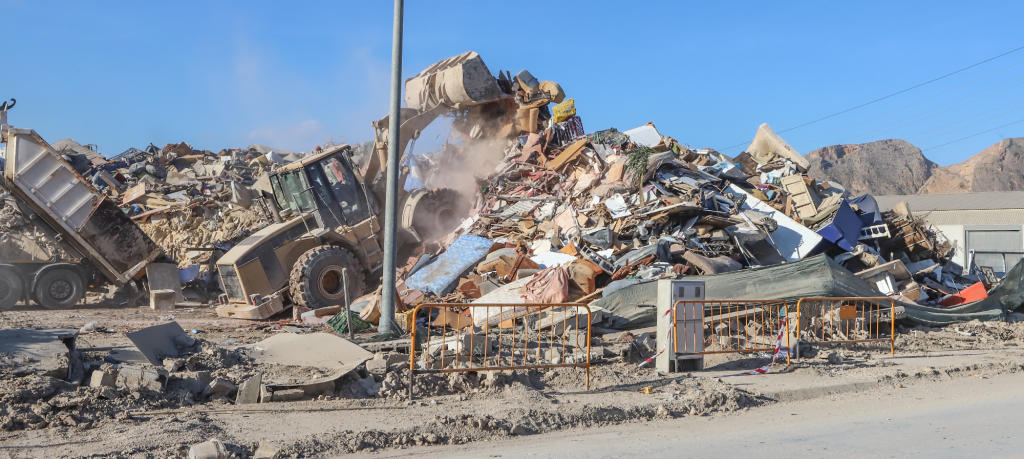The industrial park at Puente Alto de Orihuela has become one of the most striking images the image of the devastating Gota Fria that the city and many others suffered in the Vega Baja. Many of its streets and roadways are still full of mud, there are still vehicles that were dragged along by strong currents and that still need to be removed, and only some on the businesses and companies have been able to resume their activities.
Others will need rather more time to recover from the damage and there are others that have announced that they will be closing and laying off their workers.
The estate is a symbol of the appalling devastation of the worst cold drop in 140 years, to where thousands of household goods have been gathered and are piled up in mountains of furniture, appliances and memories belonging to families that have lost everything.
The constant stream of trucks are piled high with 300 tons per day of unusable belongings from the hundreds of flooded homes in the city and their surrounding districts.
The municipality has already moved 4,800 tons of furniture and appliances to the treatment plant with at least 2,000 more remaining in the streets.
A change to the zonal plan sees the Department of Road Cleaning taking 40 full trucks a day to the Cañada Hermosa treatment plant in Murcia, the closest to the municipality. They should go to Xixona, some way further, but the general director of Quality and Environmental Education, Joan Piquer, was able to obtain the agreement of the Cañada Hermosa plant to accept the loads saving valuable time in their transfer and allowing the garbage trucks to work much more efficiently as they continue to clear the streets.
The task, according to the councillor, Damasio Aparicio, will continue, at least, until the end of this week as some 2,000 tons of furniture and appliances still lie around the area, much of it in places where the water reaches up to a metre and a half in height.
The cost to the municipality of disposing of the goods is 50 euros per ton, so far an average of 300 tons daily for 16 days, and there are still many residents who have not been able to access their garages and storage rooms because they are still full of water and mud, so the furniture runined by the storms will be still greater.
But despite all this the normal waste collection service has now been restored with the itineraries and frequencies back to those before that fateful 12 September. The collection of household goods has also been reinstated so that the public can once again contact the City Council for their removal.
The Vega Baja continues to suffer the results of DANA. Much of the region’s agriculture, particularly in municipalities such as Dolores, San Fulgencio and Daya Vieja, is still under water, a lot of it stagnant, with the fear of pests and infestations of mosquitoes, and other insects, as well as many dead animals, which have led the affected towns to launch a health alert for fear of an outbreak of disease.
Councillor Aparicio said that more than half of the refuse trucks, garbage cleaning and collection machinery used by the City Council has also suffered serious damage. All of the road sweepers and many rear-loading waste trucks are in the workshop and the council does not know if they can be repaired, the current cost of which amounts to three million euros. “We will not know the true cost until we can make a measured assessment but that will only come when we are satisfied that we have done as much as we can for the people,” said the councillor.





